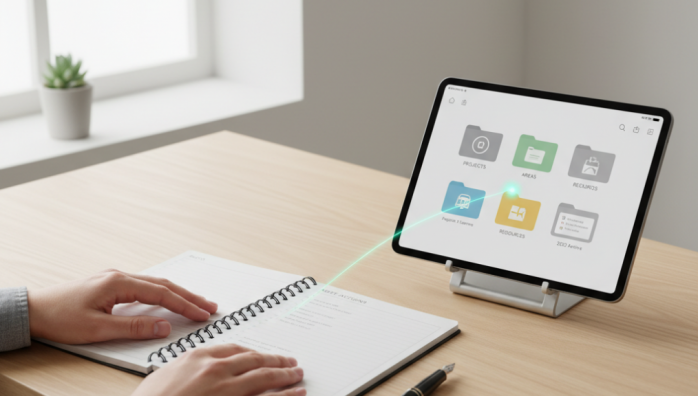How I Combined the GTD and PARA Methods
by admin in Productivity & Tools 17 - Last Update November 21, 2025

For years, I felt like I was living a double life in my productivity setup. On one side, I was a die-hard fan of the Getting Things Done (GTD) methodology. It was my command center for action, turning the chaos of my life into a clear, manageable list of next steps. But on the other side, my digital world—my notes, my articles, my research—was a disaster. That\'s when I discovered the PARA method, and it felt like a revelation for organization. The problem? I was now trying to serve two masters, and it was exhausting.
I spent months trying to choose. Should I go all-in on GTD\'s action-first approach or commit to PARA\'s pristine organizational structure? It felt like an impossible choice, and frankly, neither system felt complete on its own. GTD handled my tasks beautifully but offered little for my knowledge library. PARA gave every piece of information a home but didn\'t have that same relentless focus on forward momentum. I was either perfectly organized but inert, or constantly busy but with a messy digital backend. I nearly gave up on both.
The \'aha\' moment: they solve different problems
The breakthrough for me came when I stopped seeing them as competitors. I realized I was trying to use a hammer (GTD) to organize a library and a card catalog (PARA) to build a house. It was never going to work. My \'aha\' moment was simple: GTD is my system for managing verbs (the actions), while PARA is my system for managing nouns (the information).
Once I framed it that way, everything clicked. They weren\'t two opposing philosophies; they were two essential components of a single, cohesive system. GTD could be the engine, and PARA could be the chassis and storage. They weren\'t meant to replace each other; they were meant to complement each other.
My hybrid GTD + PARA workflow in practice
After a lot of trial and error, I\'ve settled on a workflow that feels both incredibly simple and profoundly effective. It doesn\'t require complex software—just a shift in how I process information from the very beginning.
Step 1: The universal GTD inbox
This part is pure, classic GTD. Everything—an email, a stray thought, a link to an article, a physical piece of mail—goes into a single inbox. I don\'t sort it, I don\'t tag it, I just capture it. The goal is to get it out of my head quickly and into a trusted place. For me, this is usually a simple digital notes app.
Step 2: Processing with two sets of questions
This is where the integration happens. During my regular processing sessions (usually once a day), I look at each item in my inbox and ask two sets of questions.
First, the GTD questions:
- Is this actionable?
- If so, what is the very next physical action?
- Can I do it in under two minutes?
- Does it belong to a larger project?
Then, if the item contains information worth keeping (whether it\'s actionable or not), I ask the PARA questions:
- Does this support an active Project?
- Is it related to an ongoing Area of my life or work?
- Is it a general Resource I might want later?
- Or is it something I\'m done with and can Archive?
Step 3: Routing everything to the right place
Based on the answers, each item has a clear destination. An email that requires a reply (action) and contains an important attachment (information) gets processed twice. The \'reply\' action goes into my task manager, tagged with the relevant project. The attachment goes into the corresponding `Project` folder in my PARA file system. An interesting article I read (no action) goes directly into my `Resources` folder under the appropriate topic. A thought about a vacation (Area) might generate a few tasks and some reference material for my \'Travel\' area folder.
This dual-processing approach means that nothing gets lost. Actions are captured, and knowledge is filed. My task manager isn\'t cluttered with reference material, and my filing system isn\'t a graveyard of dead tasks. After years of searching, I\'ve finally found a sense of calm and control. It wasn\'t about finding the one perfect system, but about realizing the best system was one I built myself by combining the strengths of two great ones.










